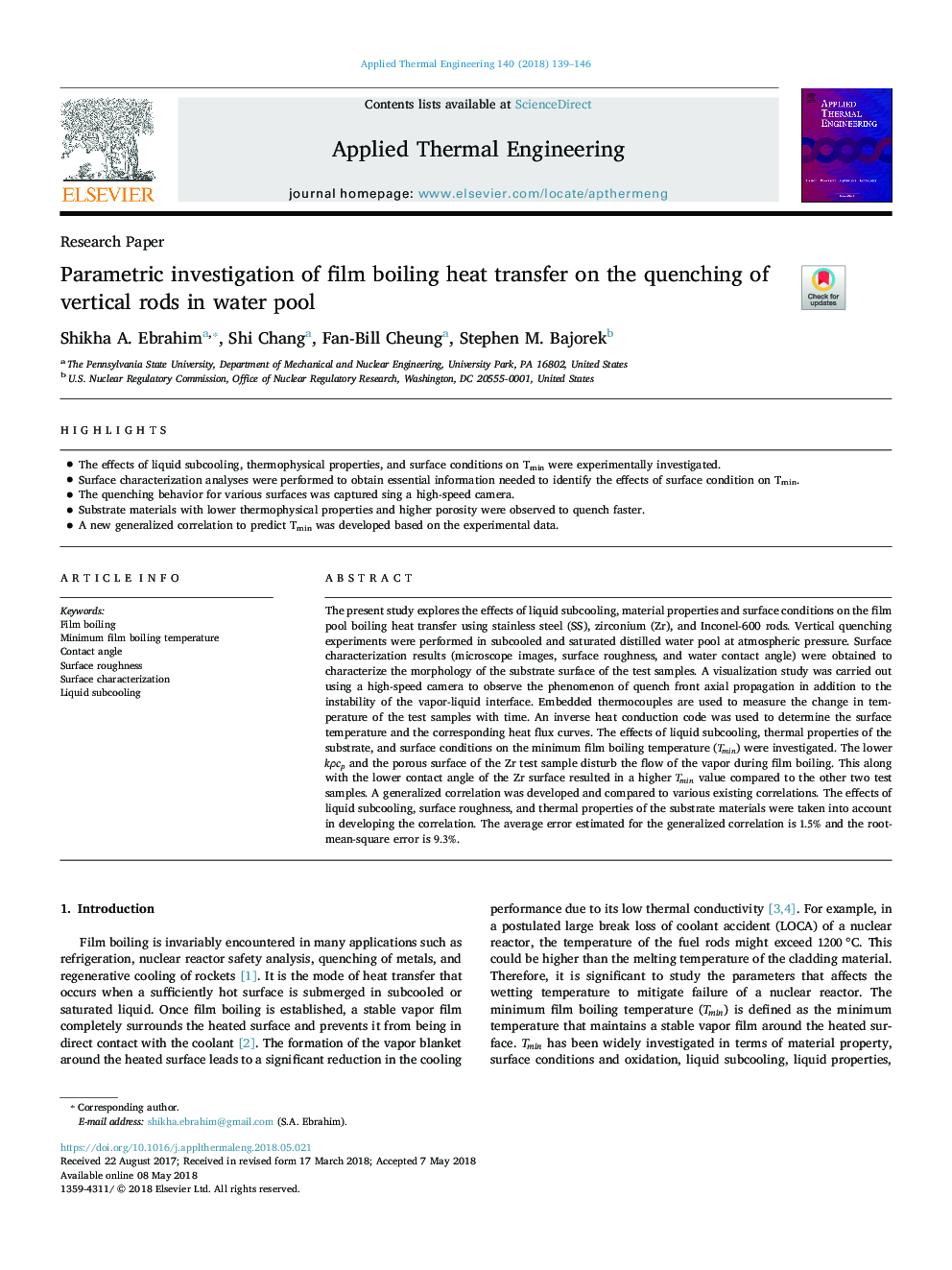| Article ID | Journal | Published Year | Pages | File Type |
|---|---|---|---|---|
| 7045013 | Applied Thermal Engineering | 2018 | 8 Pages |
Abstract
The present study explores the effects of liquid subcooling, material properties and surface conditions on the film pool boiling heat transfer using stainless steel (SS), zirconium (Zr), and Inconel-600 rods. Vertical quenching experiments were performed in subcooled and saturated distilled water pool at atmospheric pressure. Surface characterization results (microscope images, surface roughness, and water contact angle) were obtained to characterize the morphology of the substrate surface of the test samples. A visualization study was carried out using a high-speed camera to observe the phenomenon of quench front axial propagation in addition to the instability of the vapor-liquid interface. Embedded thermocouples are used to measure the change in temperature of the test samples with time. An inverse heat conduction code was used to determine the surface temperature and the corresponding heat flux curves. The effects of liquid subcooling, thermal properties of the substrate, and surface conditions on the minimum film boiling temperature (Tmin) were investigated. The lower kÏcp and the porous surface of the Zr test sample disturb the flow of the vapor during film boiling. This along with the lower contact angle of the Zr surface resulted in a higher Tmin value compared to the other two test samples. A generalized correlation was developed and compared to various existing correlations. The effects of liquid subcooling, surface roughness, and thermal properties of the substrate materials were taken into account in developing the correlation. The average error estimated for the generalized correlation is 1.5% and the root-mean-square error is 9.3%.
Related Topics
Physical Sciences and Engineering
Chemical Engineering
Fluid Flow and Transfer Processes
Authors
Shikha A. Ebrahim, Shi Chang, Fan-Bill Cheung, Stephen M. Bajorek,
